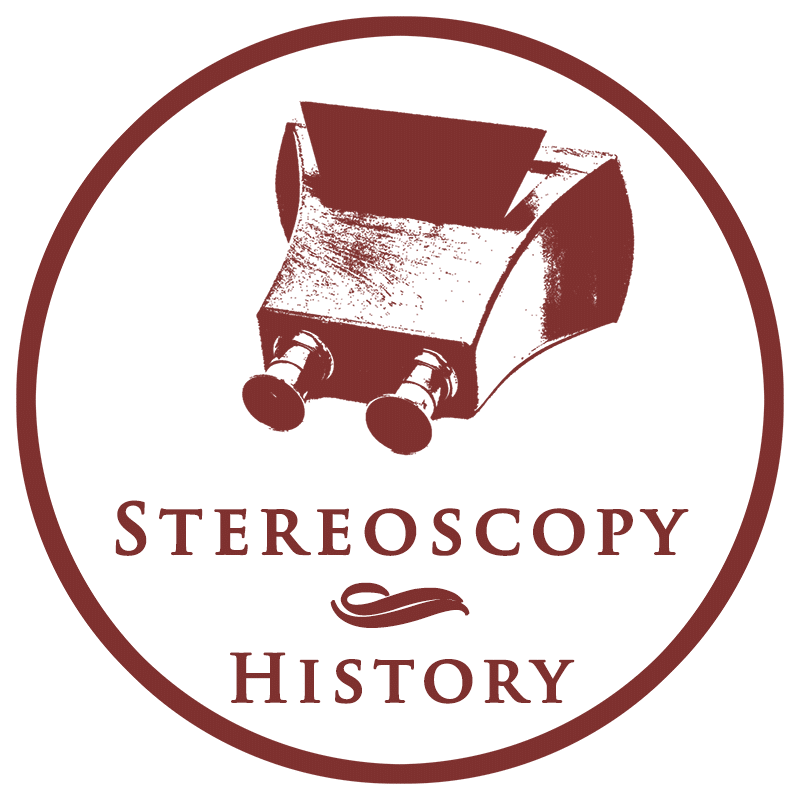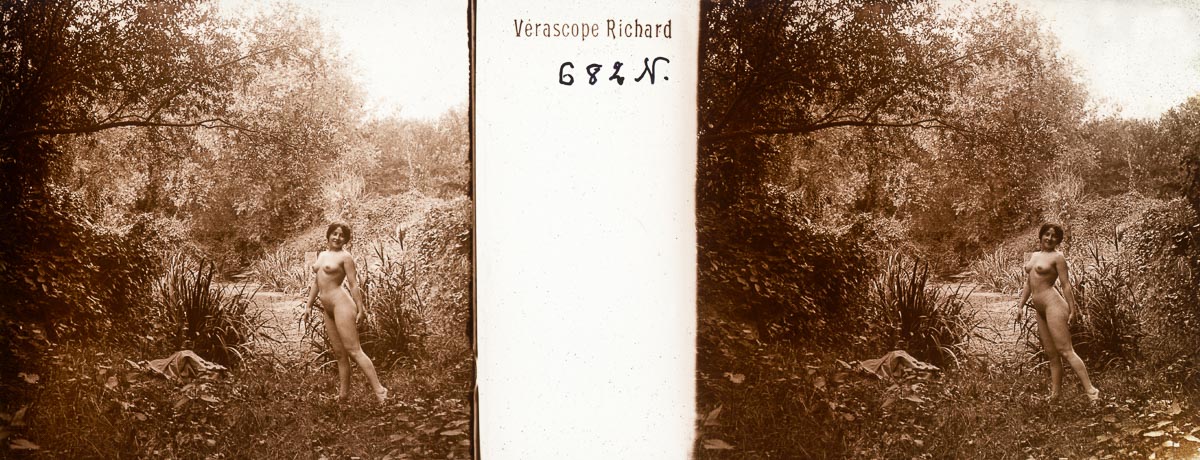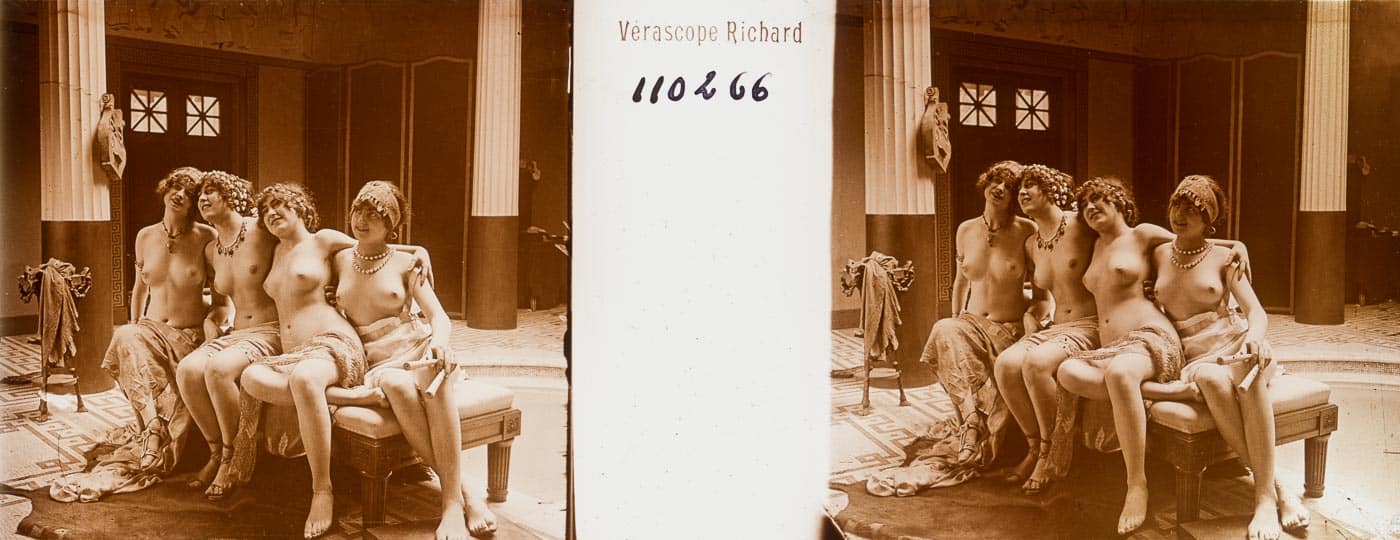
45 x 107 mm glass stereoview, 1913
Jules Richard is known for his revival of stereoscopy in France with the introduction of the compact Vérascope stereo camera for 45 x 107 mm glass stereoviews. However, Richard was also a photographer and publisher of erotic stereoviews. Soon after the launch of the Vérascope, he created the first series of erotic stereoviews that were marketed in the beginning of the 20th century1. In 1909, Richard built an ancient Roman-styled atrium next to his house in Paris2, which he used as a photo studio. Inside the atrium, and in the surrounding gardens, erotic photos were taken by him and other photographers. The models posed in a mythological setting from classical antiquity, which was intended to make the nude photos more acceptable. Genitals were usually covered by clothing or kept out of sight of the lens.
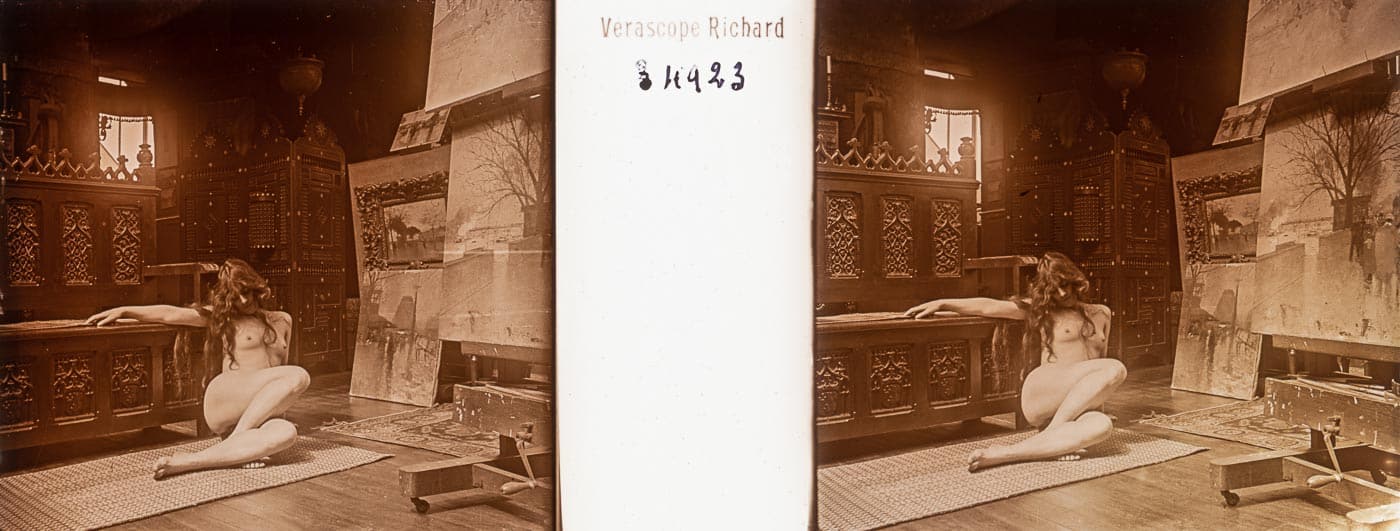
45 x 107 mm glass stereoview, c. 1906
The total range of erotic glass stereoviews was approximately 7,500, of which about 6,350 were made by Richard himself3. The stereoviews were numbered according to an ascending scheme, and notes of the photoshoots have been preserved in four albums. Information about location, year and sometimes even the names of the models is therefore known. The models were professional or amateur models, or artists from the Parisian nightclubs and theatres, such as Le Moulin Rouge and La Cigale. Some images show models being captured from different camera angles simultaneously, indicating that several photographers were active during a session. The early nude stereoviews were numbered 1 to 1175 and were made in 19004. Stereoviews with five or six-digit numbers were made from 1904 to 19285.
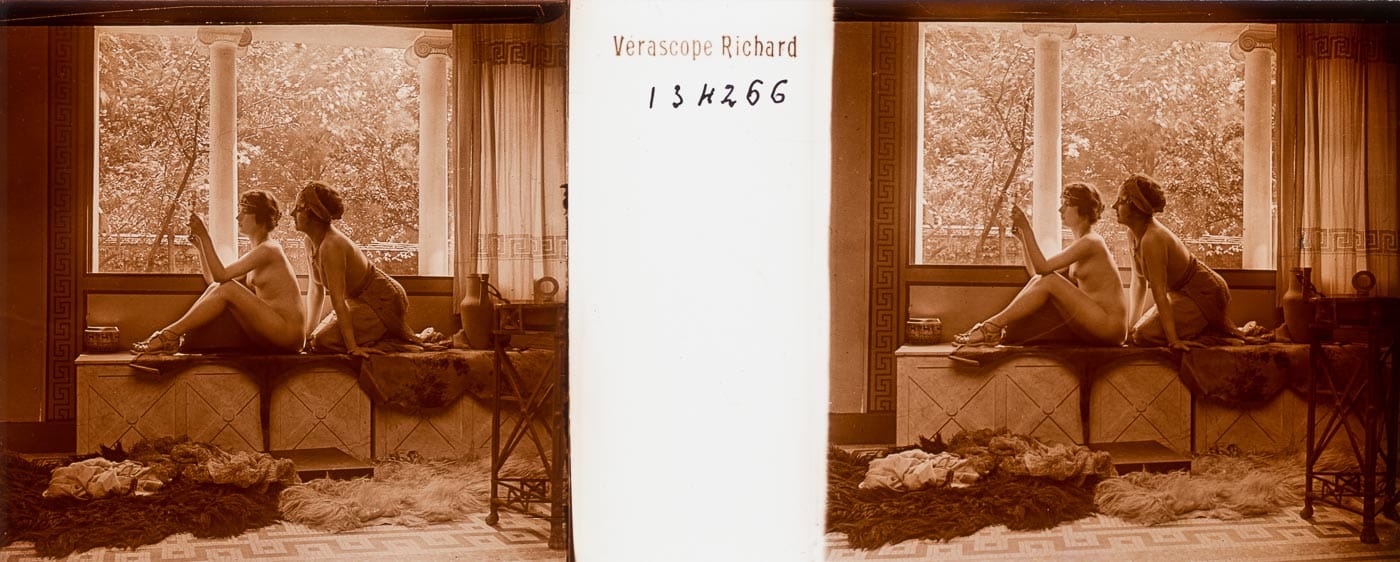
45 x 107 mm glass stereoview, 13 May 1914
An inlay in the Jules Richard 1929 product catalogue provides insight in the sales process. The stereoviews were sold individually or per 50, 100, 200, 500 and 1,000 slides. A wooden case with the highlights contained 100 slides and a stereoscope. When purchasing collections, the price per slide was lower. An individual 45 x 107 mm stereoview was 17% more expensive than the non-erotic stereoviews that Richard sold. The slides were also available in the 6 x 13 cm and 7 x 13 cm formats, but these slides were enlargements of 45 x 107 mm negatives. There were no catalogues available, and the buyer had to rely on the image selections that were made by the publisher. Maybe there were albums and stereoscopes available on location from which the buyer could make his selection.
The photo sessions continued until 1929. The atrium was demolished in 1937, to allow for the expansion of the stereoscope and camera manufacturing facilities6.
Gallery
Jules Richard
Félix Richard (1809–1876) established in 1845 a company that was specialised in the manufacturing of barometers. Jules Richard (1948–1930) took over the management of his father’s company in 1876, and patented in 1880 the first reliable barometer that could permanently record air pressure. The barometer became very successful, and the company at 25, Rue Mélingue in Paris started to grow. Richard introduced the compact 45 x 107 mm glass stereoview format and Vérascope stereo camera in 1893. It became a great success and the Vérascope became the best-selling stereo camera of its time. A product line was created around the new format, with a wide range of cameras, stereoscopes and accessories in different price ranges. The company became the leading brand of stereoscopy products and brought stereo photography within the range of amateurs. Their product names, such as Vérascope and Taxiphote, were commonly used as synonyms for stereo cameras and stereo viewers of all kinds.
The complete story of Jules Richard
